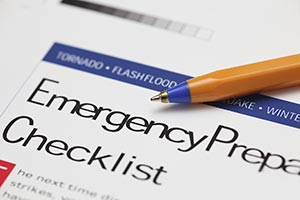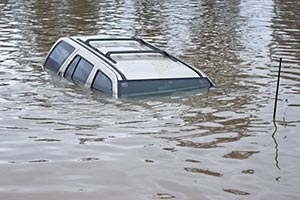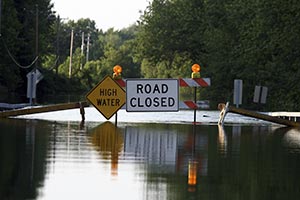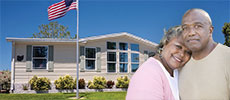Flood Coverage Insurance

Flood insurance is a smart idea no matter where you live. You don't have to live by water to be at risk. Anywhere it rains, it can flood.
Call Foremost Today
A Foremost Flood Unit representative can help you determine your flood risk and type of coverage to purchase. Call today for a quote, 866-865-2965 from 9 a.m. to 5 p.m., ET, Monday–Friday
Flood Coverage Insurance
Flood insurance is a smart idea no matter where you live. You don't have to live by water to be at risk. Anywhere it rains, it can flood.
Call Foremost Today
A Foremost Flood Unit representative can help you determine your flood risk and type of coverage to purchase. Call today for a quote, 866-865-2965 from 9 a.m. to 5 p.m., ET, Monday–Friday
Floods are the most common natural disaster, causing more than $2 billion in property damage every year. Just a few inches of water can cause unexpected damage to your home. If you choose to purchase your National Flood Insurance Program policy through Foremost, one of our Foremost Flood Unit representatives will help you get the coverage you want in the event of a flood.
Flood Coverage Options
If your community participates in the National Flood Insurance Program (NFIP), Flood insurance is available for single family residences, condo owners and associations, renters, mobile and manufactured homes, commercial structures and other residential structures regardless of your flood risk.
Low-to Moderate-Risk Areas
Most buildings and their contents in a low- to moderate-risk areas are eligible for a low-cost Preferred Risk policy. A Preferred Risk policy offers two types of coverage: building and contents combined or contents-only. Rates start as low as $119 a year for homeowners and as low as $39 a year for renters.
If you live in a low- to moderate-risk area and you don't qualify for a Preferred Risk policy due to multiple flood losses on your property, a Standard Risk policy is available.
High-Risk Areas
Customers in High-risk areas can purchase Standard Risk coverage for the building only, contents only or for both the building and contents.
Coverage Limits
Based on the value of your building and its contents, coverage is available up to the following maximum limits of the National Flood Insurance Program:
| Type | Building | Contents |
|---|---|---|
| Residential | $250,000 | $100,000 |
| Nonresidential (commercial) | $500,000 | $200,000 |
If you need coverage beyond these amounts, you may be eligible for a separate Excess Flood policy. Ask our Foremost Flood Unit representative today at 866-865-2965.
What's Covered
Flood insurance policies cover direct physical loss by or from flood to your building and personal property. The
following is an overview of items that would be eligible for coverage subject to the coverage purchased. For
complete coverage information, please our Foremost Flood Unit to request a sample policy at
Building Property coverage includes:
- The building and its foundation
- Electrical and plumbing systems
- Central air conditioning equipment, furnaces, and water heaters
- Refrigerators, stoves and built-in appliances such as dishwashers
- Permanently installed carpeting over unfinished flooring
- Permanently installed paneling, wallboard, bookcases, and cabinets
- Window blinds
- Detached garages (up to 10% of Building Property coverage)
Personal Property (contents) coverage includes:
- Personal belongings, such as clothing, furniture, and electronic equipment
- Curtains
- Portable air conditioners
- Portable microwave ovens and portable dishwashers
- Carpets not permanently installed over unfinished flooring
- Washers and dryers
- Freezers and the food in them
- Certain valuable items such as original artwork and furs (up to $2,500)
- Replacement cost coverage is not available for personal property
Other Coverages:
- Debris removal at federal minimum wage (not subject to deductible)
- Loss avoidance measures ($1,000 limit, no deductible)
- Increased Cost of Compliance — flood proofing, relocation, elevation & demolition (subject to limitations and qualifying criteria)
Coverage for basements and property in them is limited regardless of flood risk.
A Foremost Flood Unit representative can help you determine your flood risk and type of coverage to purchase. Call today for a quote, 866-865-2965 from 9 a.m. to 5 p.m., Eastern time, Monday through Friday.
Availability
Flood insurance is available in all 50 states, as long as your community participates in the National Flood Insurance Program (NFIP), except in Coastal Barrier Resources System (CBRS) areas. Call the Foremost Flood Unit today at 866-865-2965 to find out if your community participates. Representatives are available to help you from 9 a.m. to 5 p.m., Eastern time, Monday through Friday.
Most flood policies have a 30-day waiting period before coverage begins, so call for a quote today.
What You Should Know About Floods and Flood Insurance
Devastating floods can occur throughout the United States anytime of the year. Here are some things you should consider about floods and Flood insurance.
- You don't have to live by water to be at risk. Anywhere it rains, it can flood. Almost 25% of all flood claims occur in low- to moderate-risk areas.
- Most Homeowners insurance policies do not cover flood damage — federal Flood insurance does. Flood insurance also covers damage from mud flow, dirt and debris resulting from moving water.
- A home in a high-risk area has a 26% chance of being damaged by a flood during the course of a 30-year mortgage. That same home only has a 10.4% chance of a fire.
- In order to receive federal assistance in the event of a flood, the President of the United States of America must declare the flood area a federal disaster, but floods are not always declared a federal disaster.
- The most common form of Federal disaster assistance is a loan that must be repaid with interest.
- Flood insurance is affordable. Flood damage is not.
Call the Foremost Flood Unit today for a quote, toll-free, at 866-865-2965 from 9 a.m. to 5 p.m., Eastern time, Monday through Friday.
(All flood facts and statistics from the National Flood Insurance Program Website, FloodSmart.gov.)
Flood Safety

Before a Flood
The best way to minimize damage to your home or the risk of danger from a flood is to plan ahead.

During a Flood
If you find yourself caught in a flood, the most important thing you can do is make sure you and your family are safe.

After a Flood
Before re-entering your home after a flood, it's important to make sure your structure is safe.

Great Mobile Home Rates
Get affordable coverage designed just for mobile homes with the AARP Mobile Home Insurance Program from Foremost.
Learn more about mobile home coverage.

Specialized Motorcycle Coverage
Protect your bike with a policy just for AARP members.
Learn more about motorcycle coverage from Foremost.
